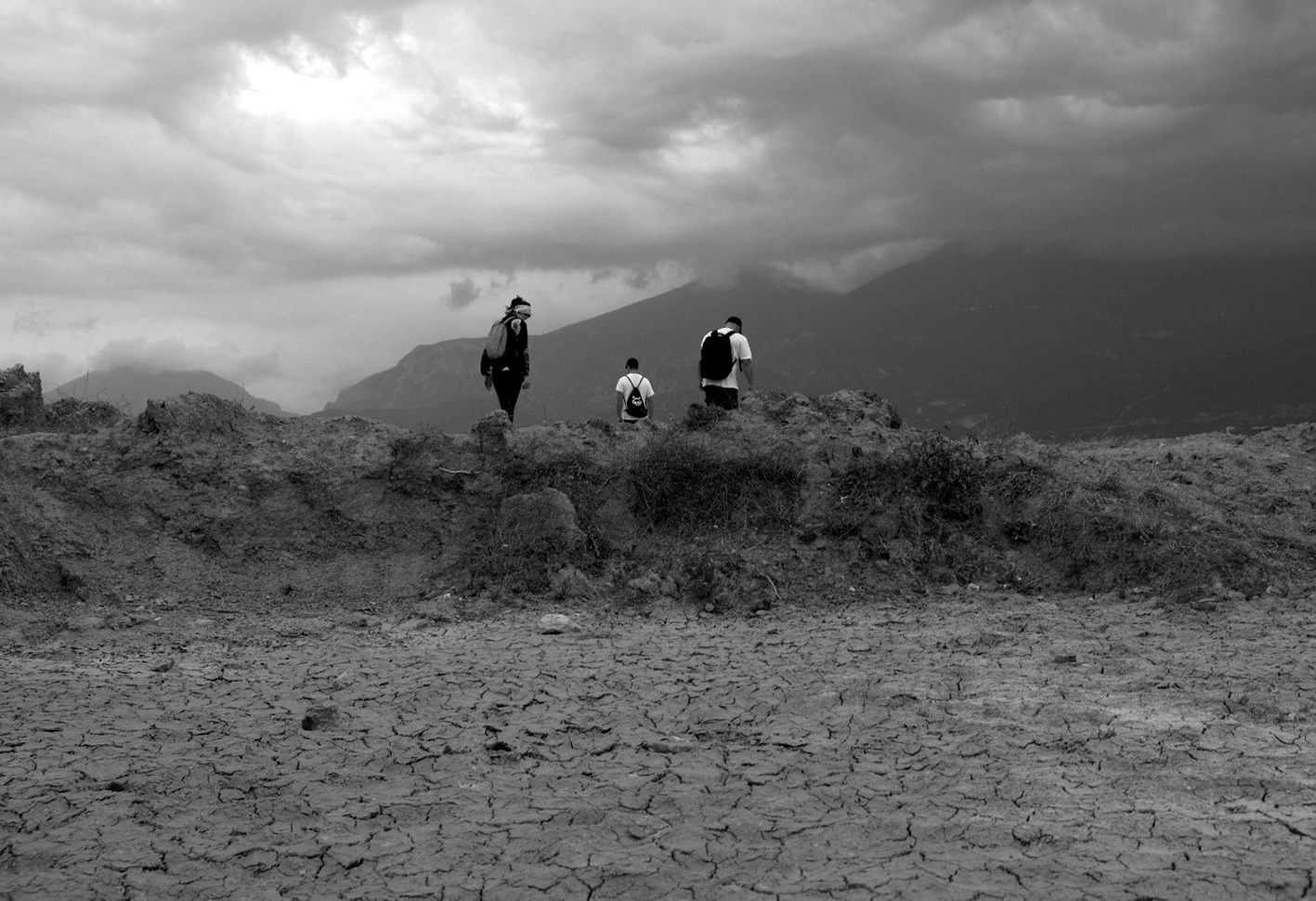
/EDEN EDEN EDEN 3
LIGHTING A FIRE ON THE BOTTOM OF THE OCEAN
Conjured by Vincent W.J van Gerven Oei and Çiçek İlengiz
In 1970, Pierre Guyotat imagined a garden of delights in his novel Eden Eden Eden, written after his imprisonment during the Algerian Liberation War for desertion and undermining the morale of the French army. More than deserting the army, Eden Eden Eden deserts civilization, especially the one espoused by the French colonial forces, which punished Guyotat with lengthy censorship. Inspired by this work, which we see as a lyrical attempt to work with language under stress, we were pressed to liberate the deserted power of an oppositional politics stifled by marginalization, incarceration, and destruction.
LIGHTING A FIRE ON THE BOTTOM OF THE OCEAN took place in the form of an initiation ritual along a path that renews the power of the political imagination. We walked sixty kilometers around the semi-rural perimeter of Tirana, along which an Italian architect in 2017 proposed an “Orbital Forest,” a “belt of 2 million trees around the city, that has the possibility of blocking the consumption of land.” Yet land consumption has skyrocketed in recent years to satisfy the corrupt construction mania of the government, oligarchs, and mafia. All around Tirana’s periphery large plots of green space are converted into gated communities, endless dumpsites for construction waste, and even Turkey-funded "breathing spaces," beyond any regulation.
In the face of this economic, political, and cultural desertion in the Albanian landscape, LIGHTING A FIRE ON THE BOTTOM OF THE OCEAN mobilizes the power of the Orbital Forest to imagine the political life in Tirana beyond constraints and cultivate connections transcending the calculus of economical and political profit. Under our current circumstances, such an act is by necessity an act of magic: a desertion from alienation. As an exhausting act of reclaiming the city, we walked with the intention to enhance our connections in time with nature, with the history of resistance and resilience in the face of regimes of relentless dispossession aiming at cutting our roots to the past, present, as well as the future. In an act of reconnecting to our origins and temporalities, we walked for four days counterclockwise along a looping path performing the following ritual:
• Day 1, starting at Kafja e Rremës in Tufinë, along the Tiranë River to Kamëz. Calling the tribes and an initiation into the ancestral genealogy: By honoring our predecessors, we connected ourselves to a genealogy of comrades who deserted before us.
• Day 2, past Mëzez and Yzberisht to the cemetery and landfill of Sharrë and Kombinat. Undoing the past and taking back the creative power blocked by a history of oppression by traveling through and with our individual pasts of resistance.
• Day 3, through the hills of Selitë, via the monument at Sauk toward the artificial lake. Aligning with our soul fragments that are on other planets, in other times and dimensions we enhanced our power to take back our future through shaping it according to our imagination.
• Day 4, onward to the Lake of Farkë and the slopes of Mount Dajt. Through an initiation into the shamanic cosmology, we called upon our totem-animals and totem-plants to assist us in aligning our present with the future that we intend to build.
This walk to light a fire on the bottom of the ocean is not a desertion in the sense of abandonment or withdrawal, but a different deserting in order to make space for the “political new” to emerge. And nature has indeed joined us. At the end of our fourth day, the aloe vera tree at the roundabout in Shkozë agreed to work with us to transform authoritarian power into the strength and vitality of wild nature. This spiritual walk venerated a life-affirming path in the service of liberating the incarcerated, censored, and marginalized collective-creative drive and its political imagination in all its multiplicity. We invite those who feel the need to reclaim their futures through the creation of “the political new” to follow the path through the non-existing forest.


